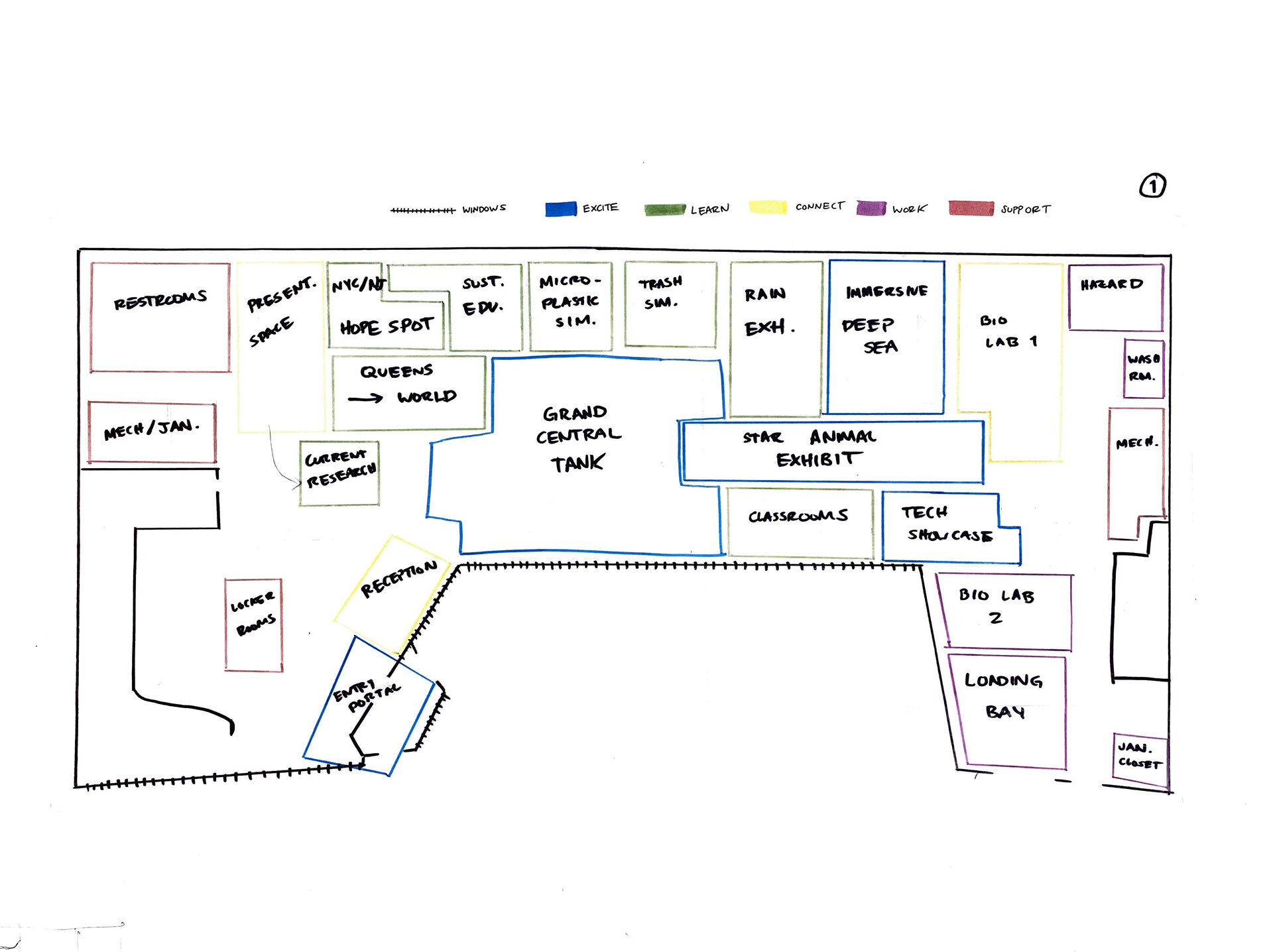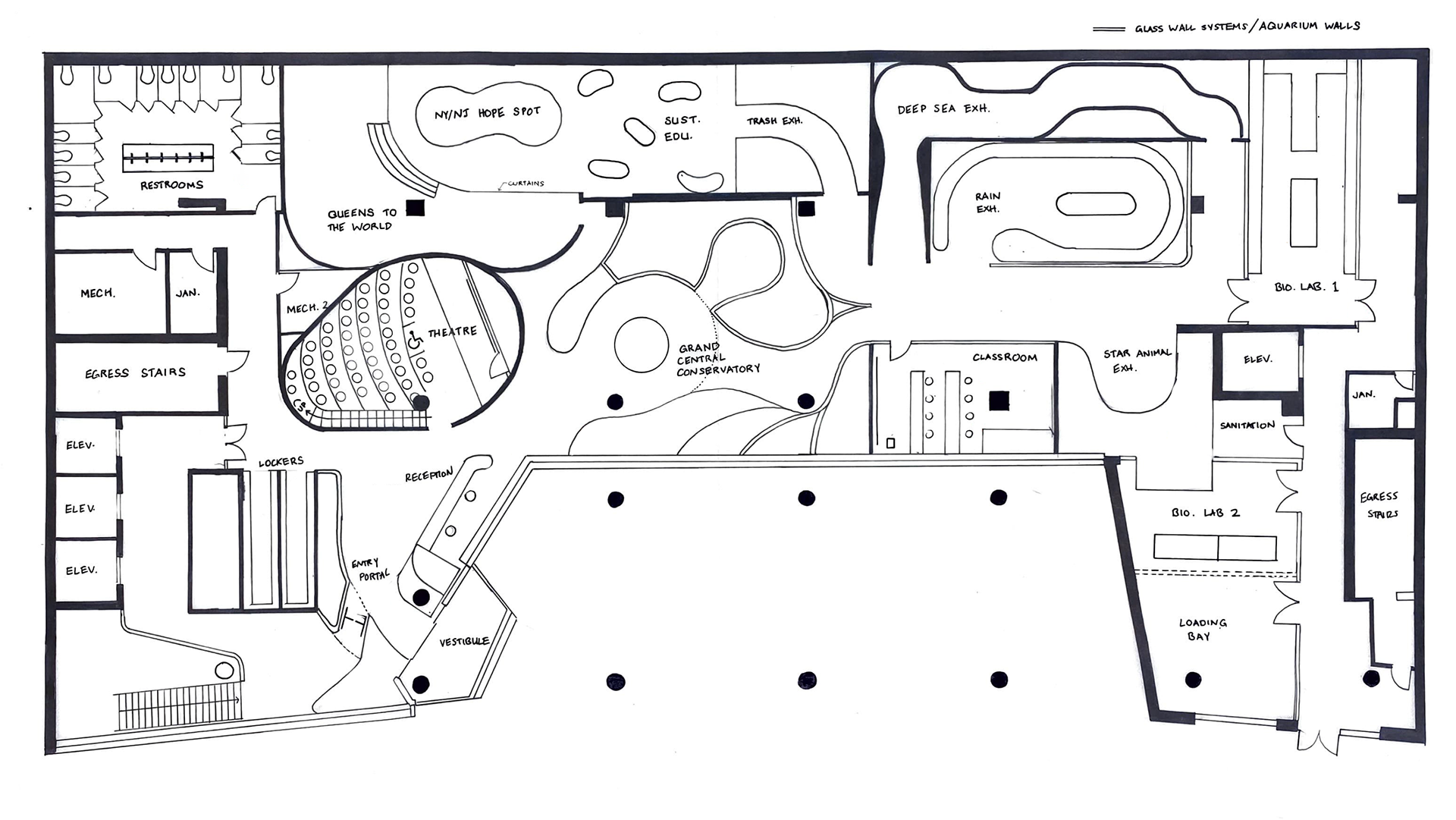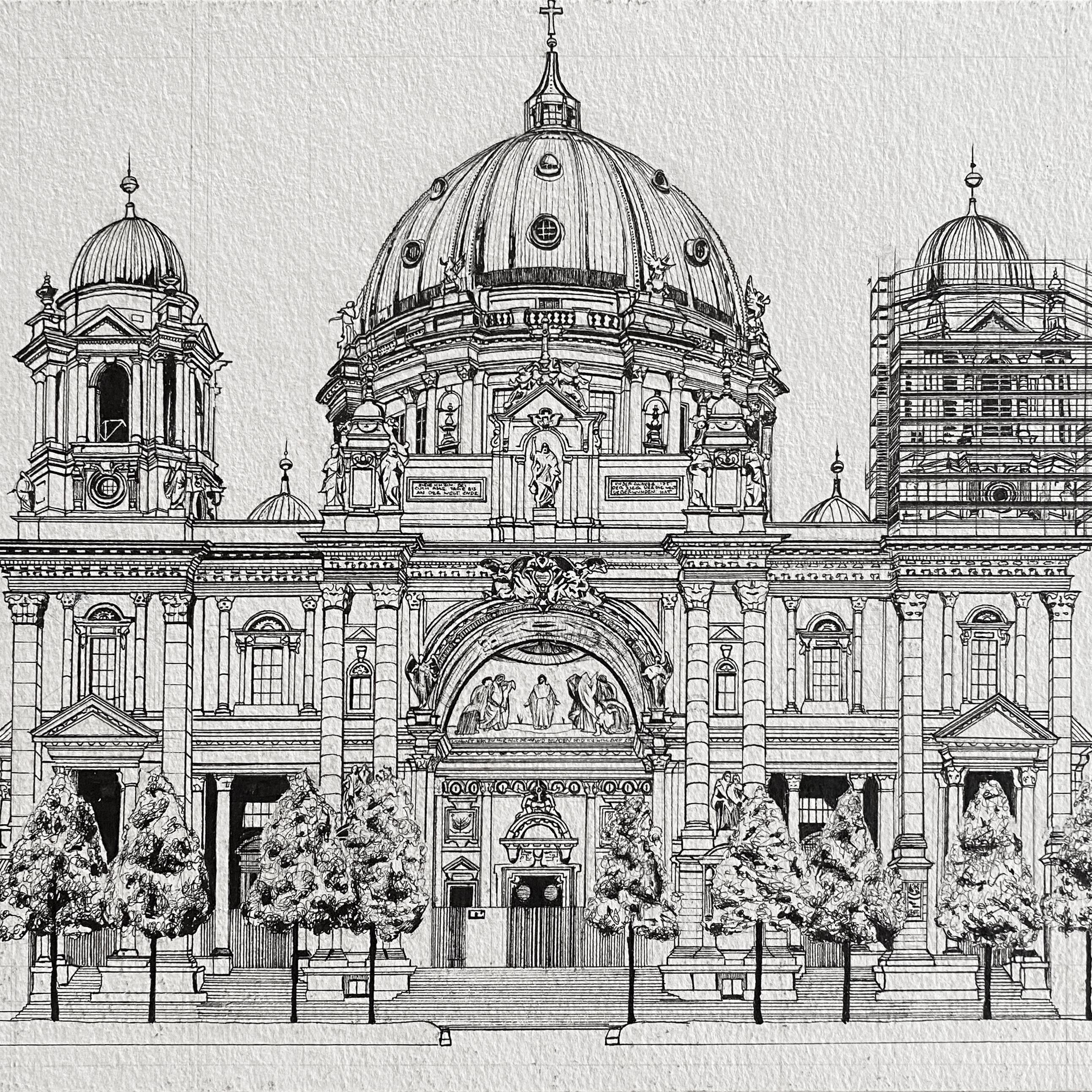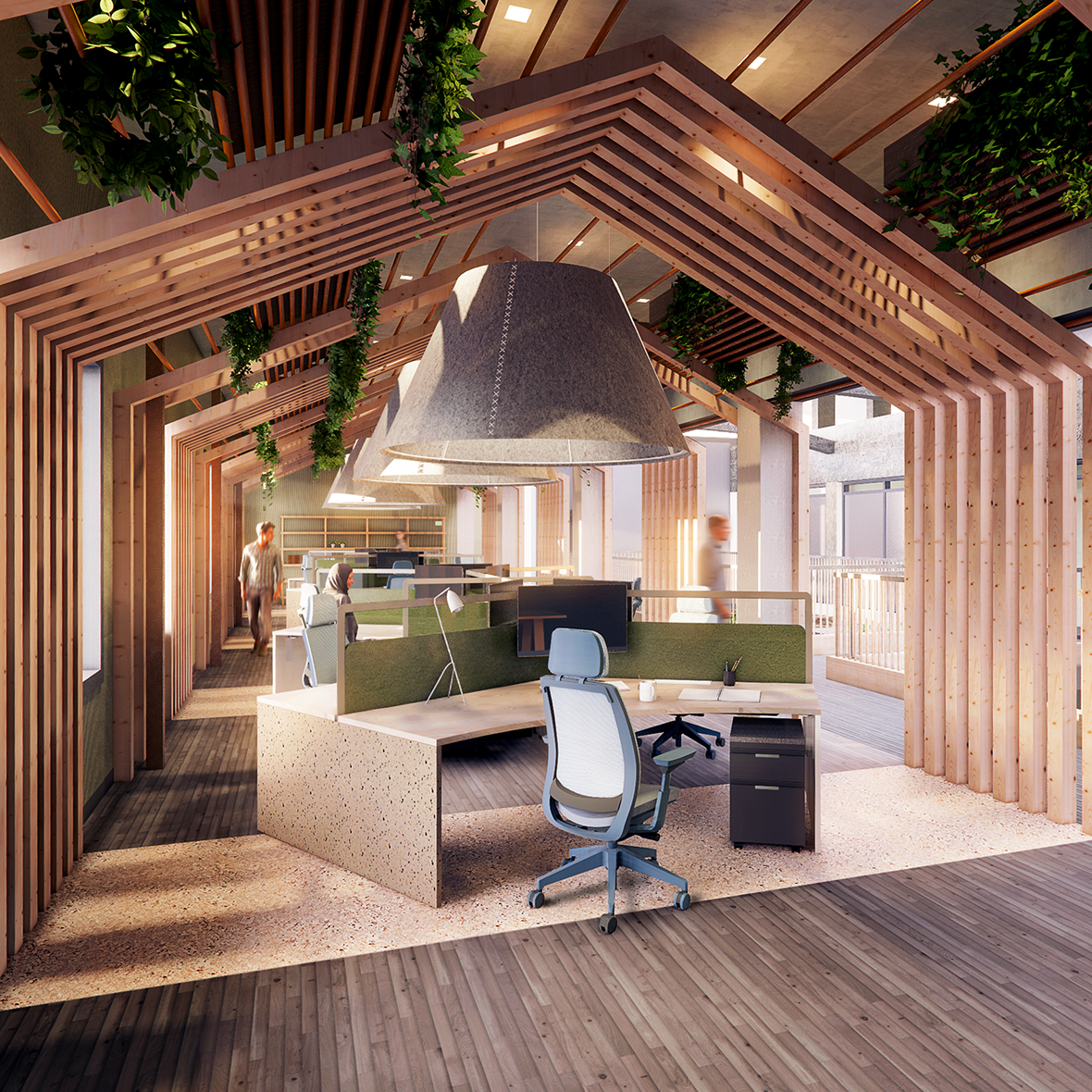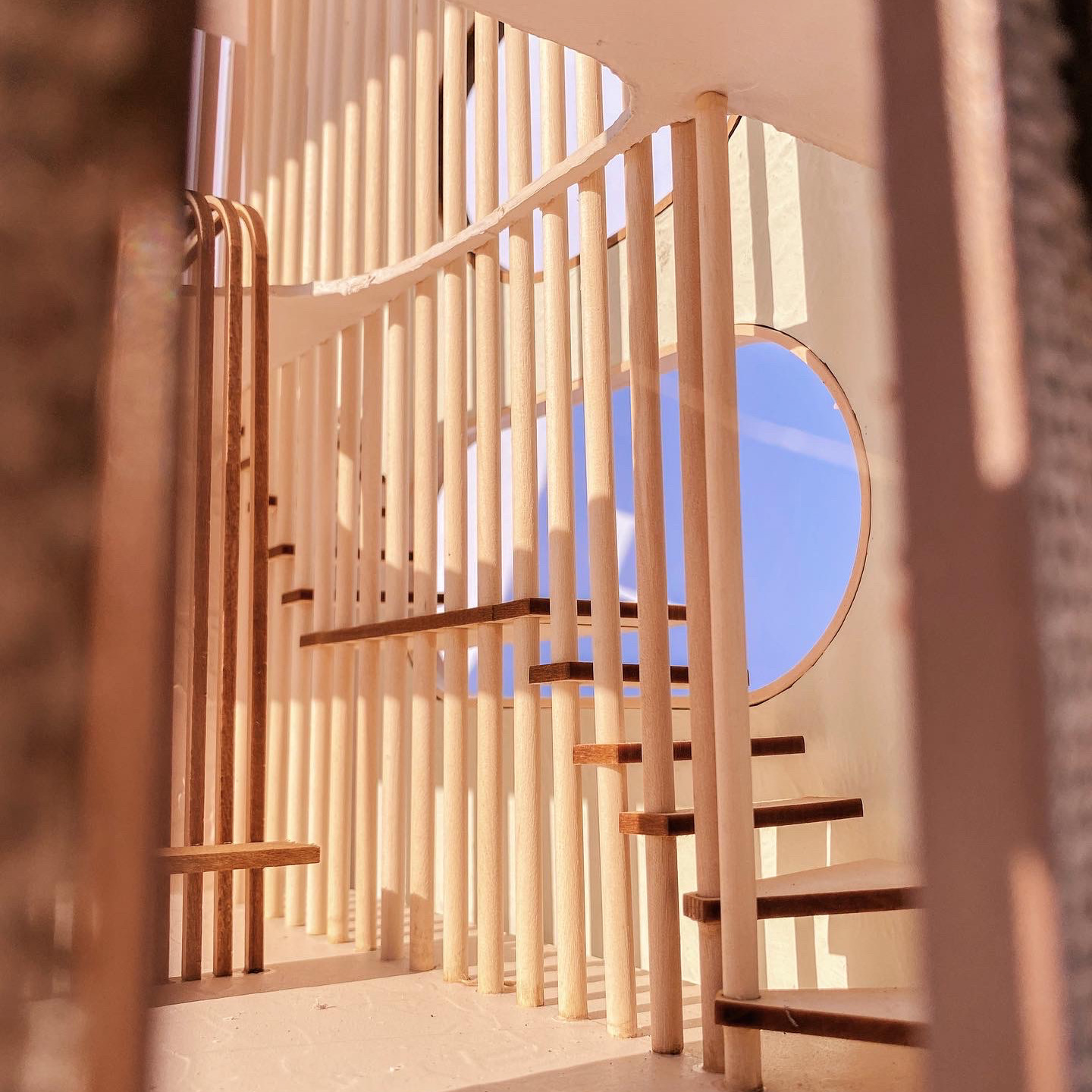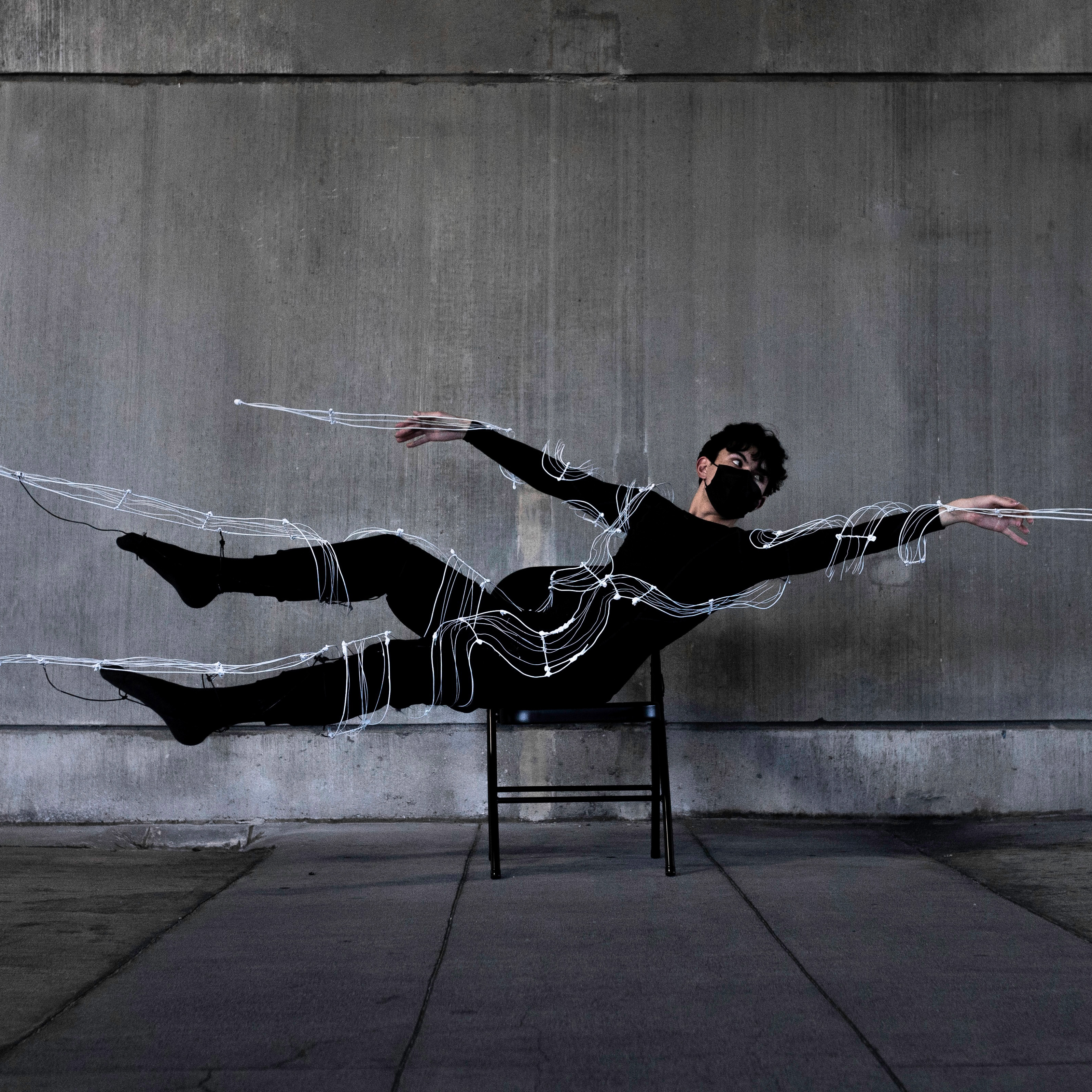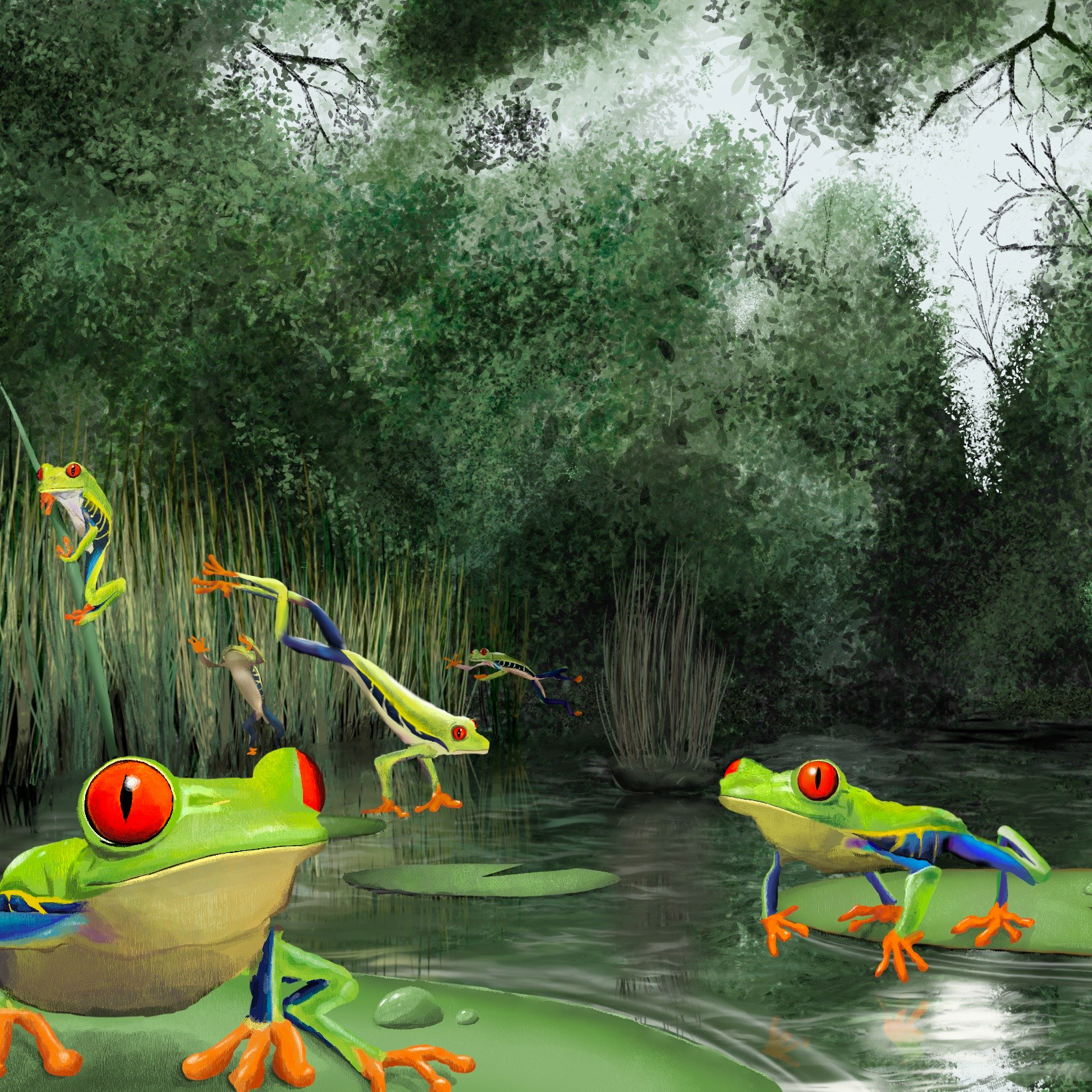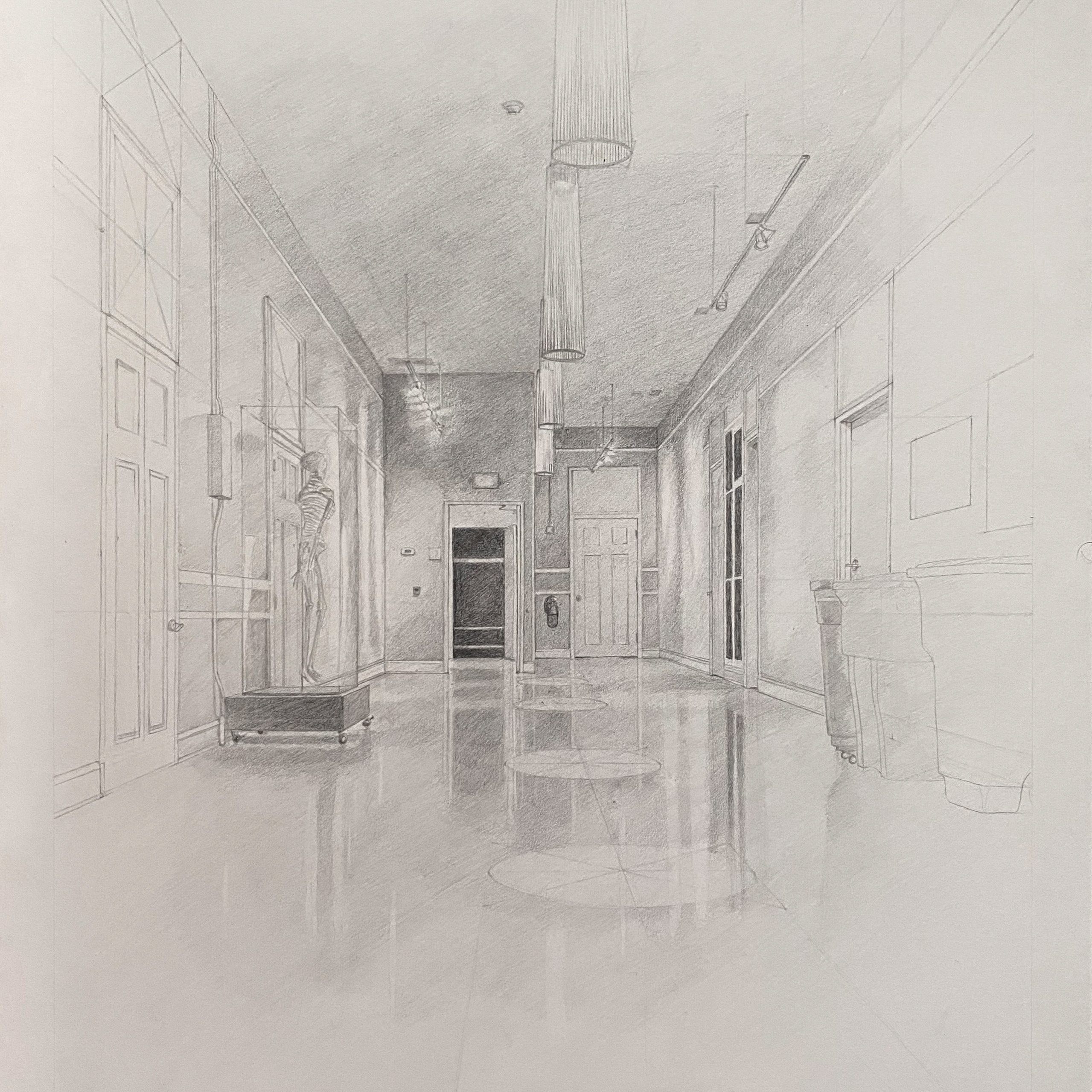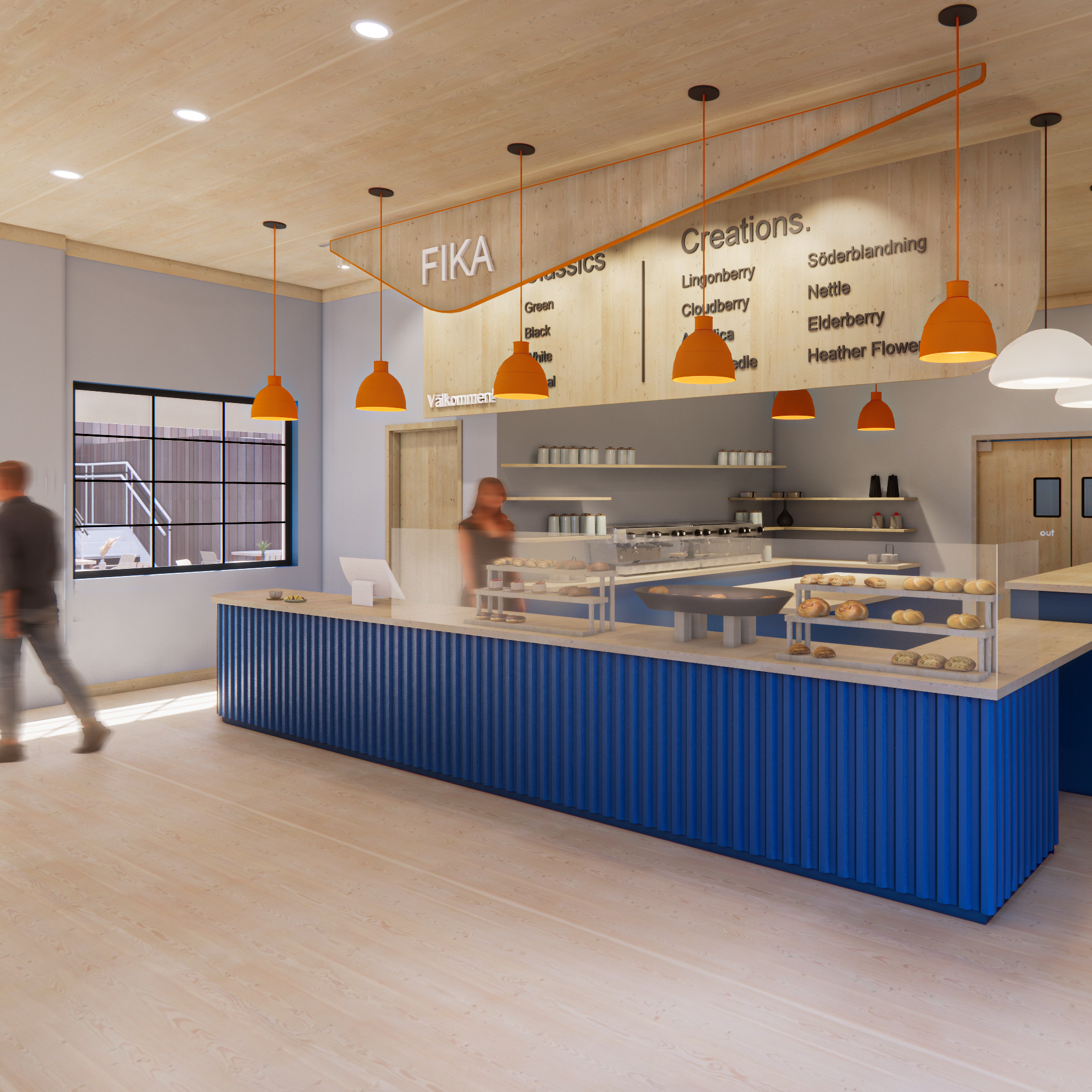Public Conservatory and Oceanographic Laboratory | 2025
“Design connects our message to people, which will hopefully inspire them to become environmentally conscious people. Design is how this science comes to life.”
-Brittany Pace, Marine Biology
-Brittany Pace, Marine Biology
Concept
The Turning Point
We are at a turning point. The looming change of our earth’s climate is now standing between us and the future of humanity. We are in need of a catalyst for change and growth for marine conservation.
Estuaries, hyperefficient ecosystems like the ones in the NY-NJ Harbors, are the bridge between rivers and the open ocean. Turning points of water chemistry, havens for sea life, and essential contributors to the health of our oceans.
The Northeastern Marine Center will be this turning point for its visitors. The catalyst. A place where the vast demographics of Queens merge to have highly affective experiences to educate and reform their view of marine conservation.
Spatially, grand ‘turning points’ disperse into intimate educational exhibits, mimicking the estuarian midpoint between waterways and the big blue.
Sketching Process
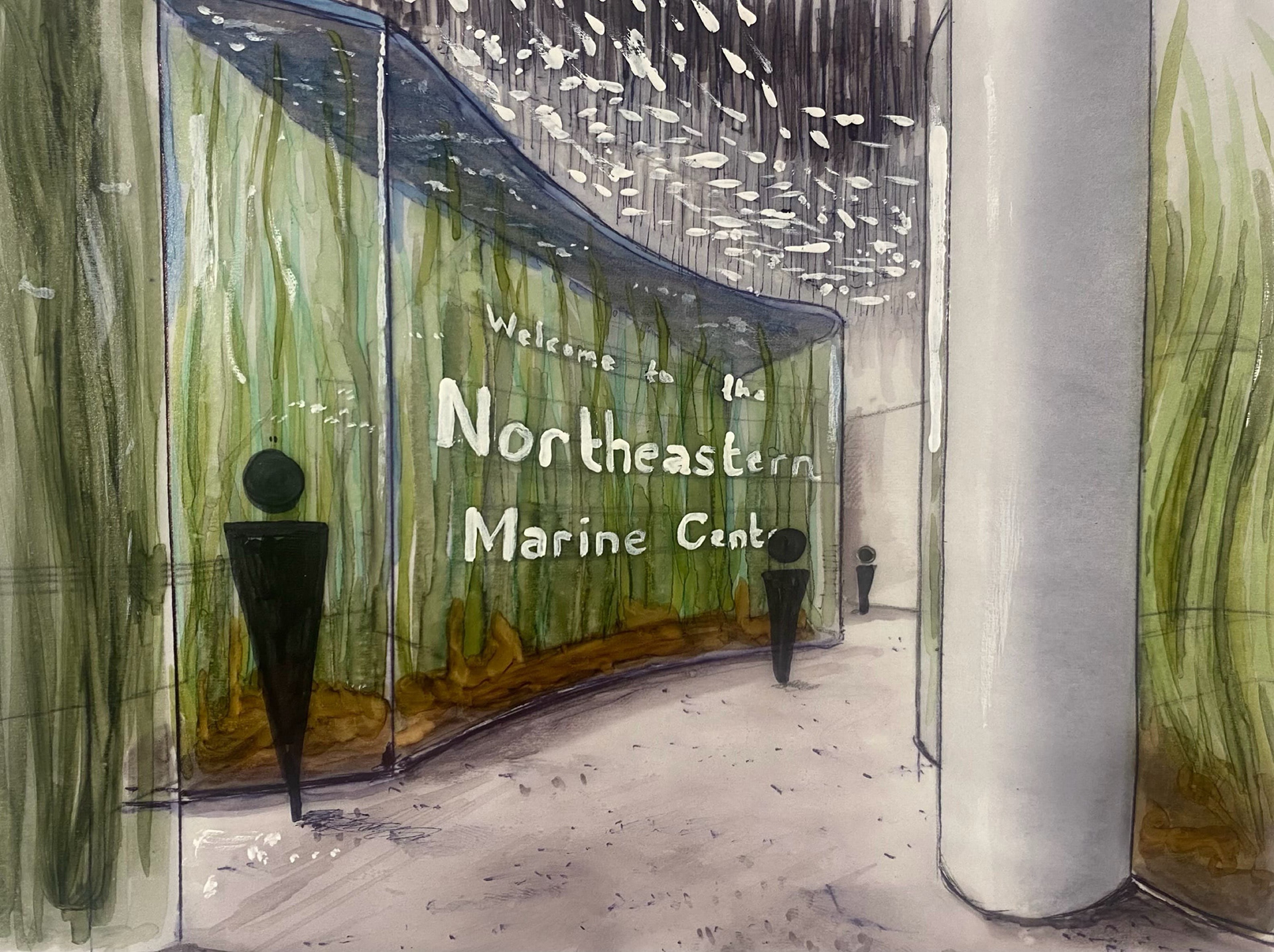
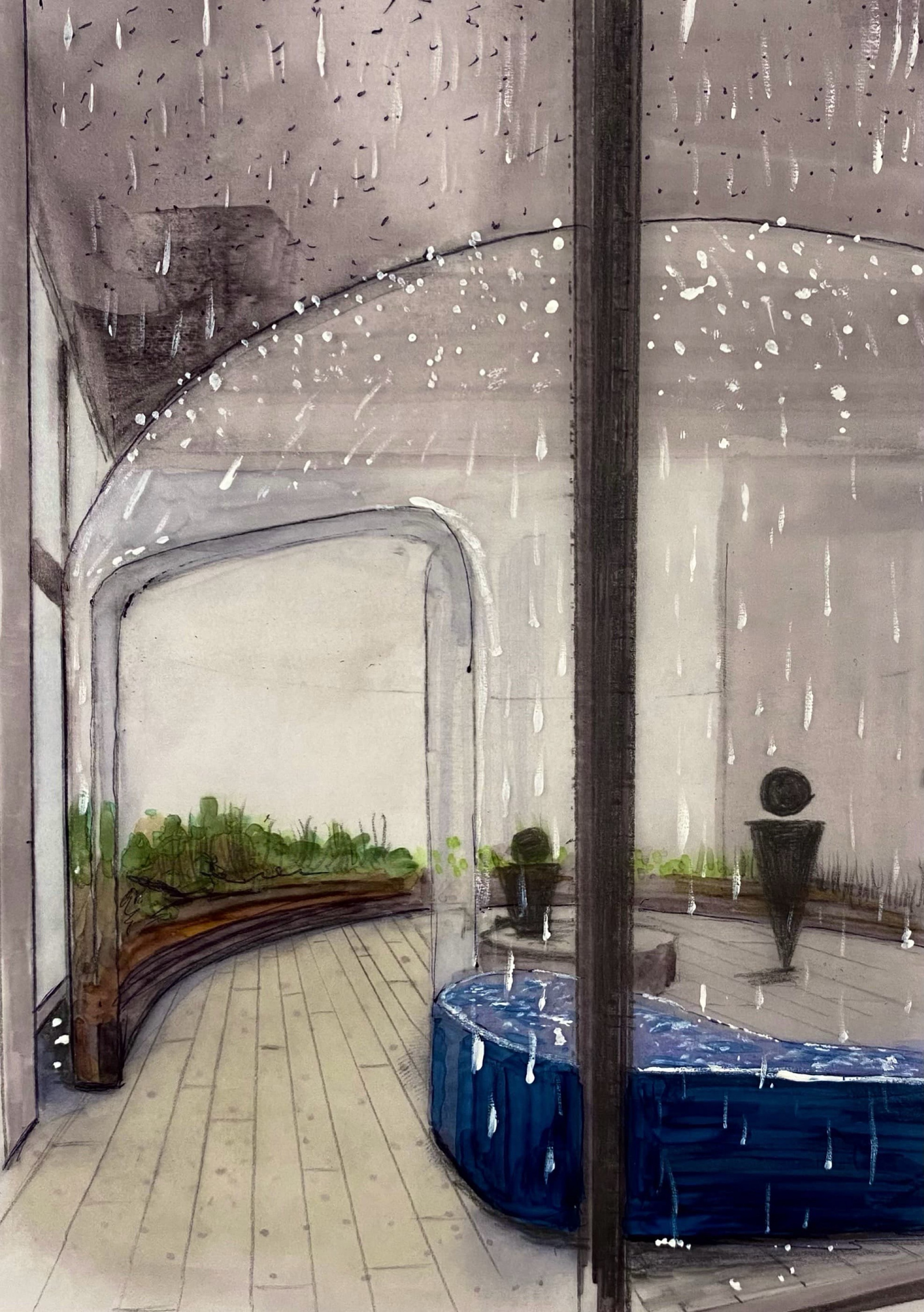
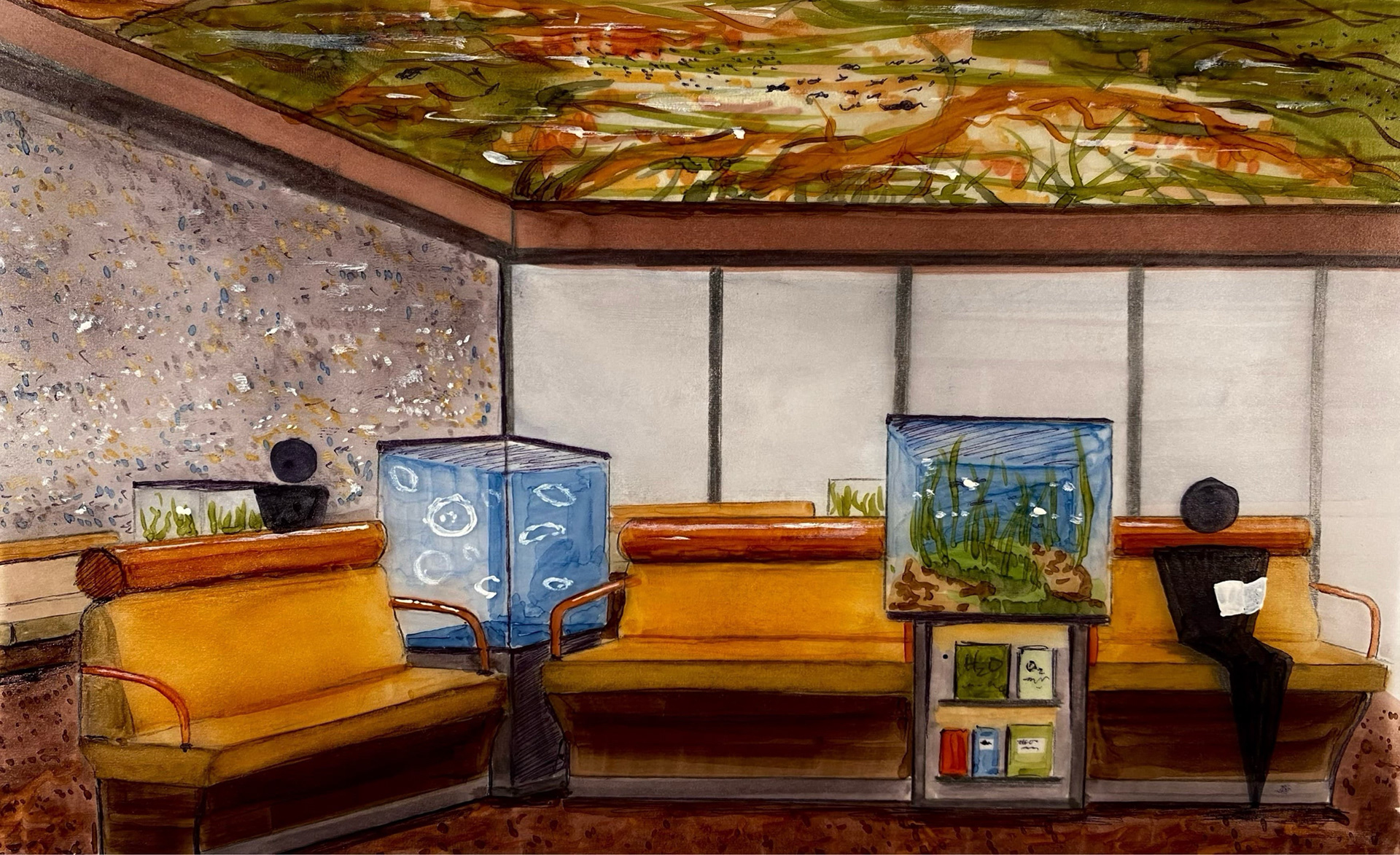
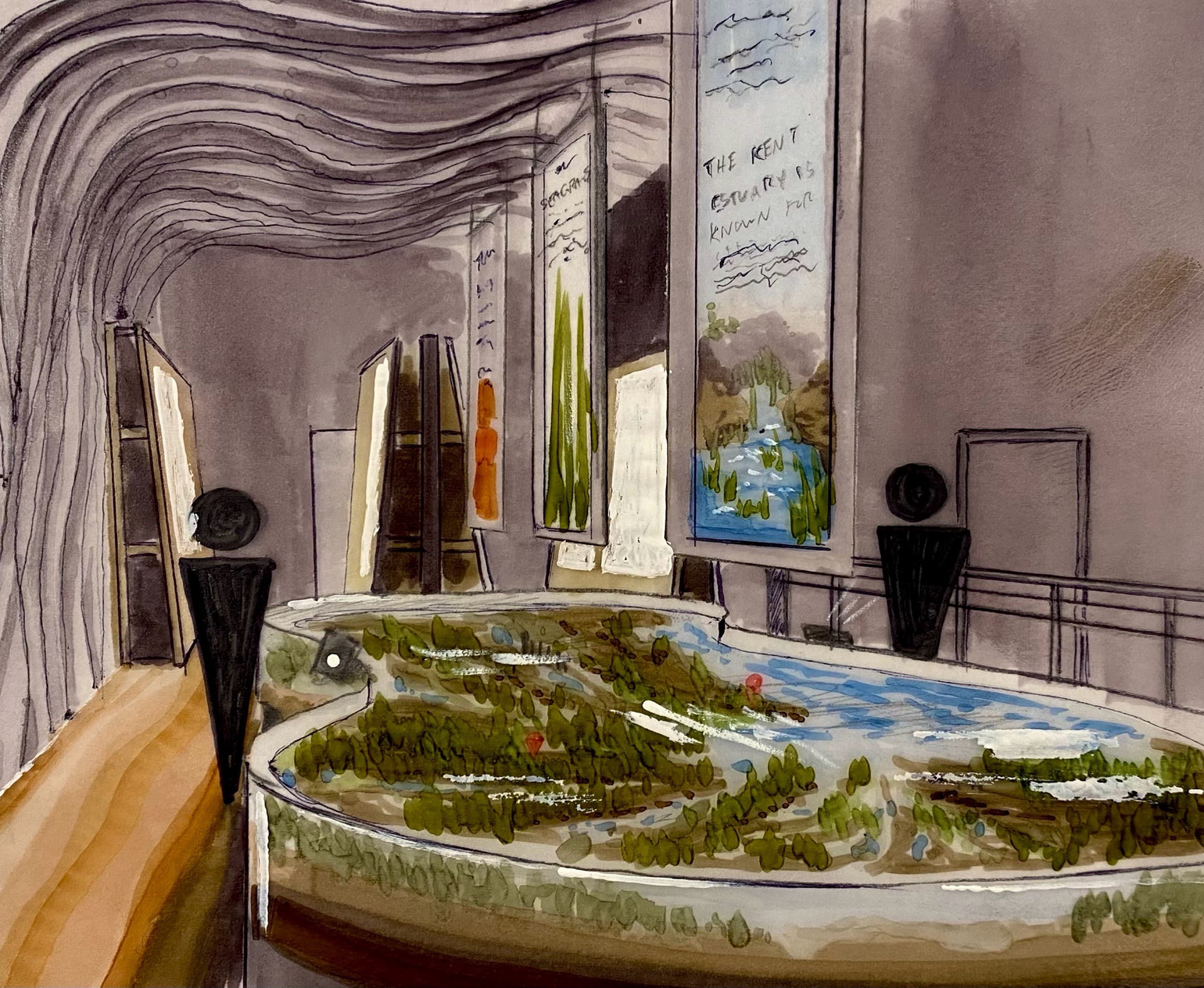
Final Renders
1. The Entry
A layered ceiling system of acoustic baffles and metal fish forms brings you to the
reception, alongside a celebration of the seagrass ecosystems of the Northeast.
Featured Materials: PET felt from recycled bottles, recycled acrylic.
reception, alongside a celebration of the seagrass ecosystems of the Northeast.
Featured Materials: PET felt from recycled bottles, recycled acrylic.
2. Central Tanks
The beginning and ending of the conservatory experience, featuring touch tanks, ceiling height immersive tanks. LED screen shows marine life in context.
Featured Materials: Structural foam from bottles, mycelium, reclaimed roof shingles, fishing nets
Featured Materials: Structural foam from bottles, mycelium, reclaimed roof shingles, fishing nets
3. The Reading Room
A moment for self education, with a scattering of amoeba-inspired sofas, close encounters with smaller marine life, all under a red kelp aquarium ceiling.
Featured Materials: Cork flooring, acoustic wall panels made from recycled clothing, recycled plastic surfaces
Featured Materials: Cork flooring, acoustic wall panels made from recycled clothing, recycled plastic surfaces
4. The Rain Exhibit
How does the rain cycle actually work? This complete immersion of the senses shows a 3D simulation of the rain cycles across different terrains, showing how important each part of this process is to ecosystem health.
Featured Materials: Scrap tire rubber brick pavers, 100% recycled plastic flooring, PET felt.
Featured Materials: Scrap tire rubber brick pavers, 100% recycled plastic flooring, PET felt.
5. The Exit Experience
To close out the conservation exhibits, users will learn daily sustainable tasks, explore their local marine neighborhoods with an interactive topographical map, and feel the impact of marine conservation in a soaring projection-mapped room.
Featured Materials: PET acoustic felt, carpet made of fishing nets, and 100% recycled plastic millwork surfaces.
Featured Materials: PET acoustic felt, carpet made of fishing nets, and 100% recycled plastic millwork surfaces.
Detail Shots
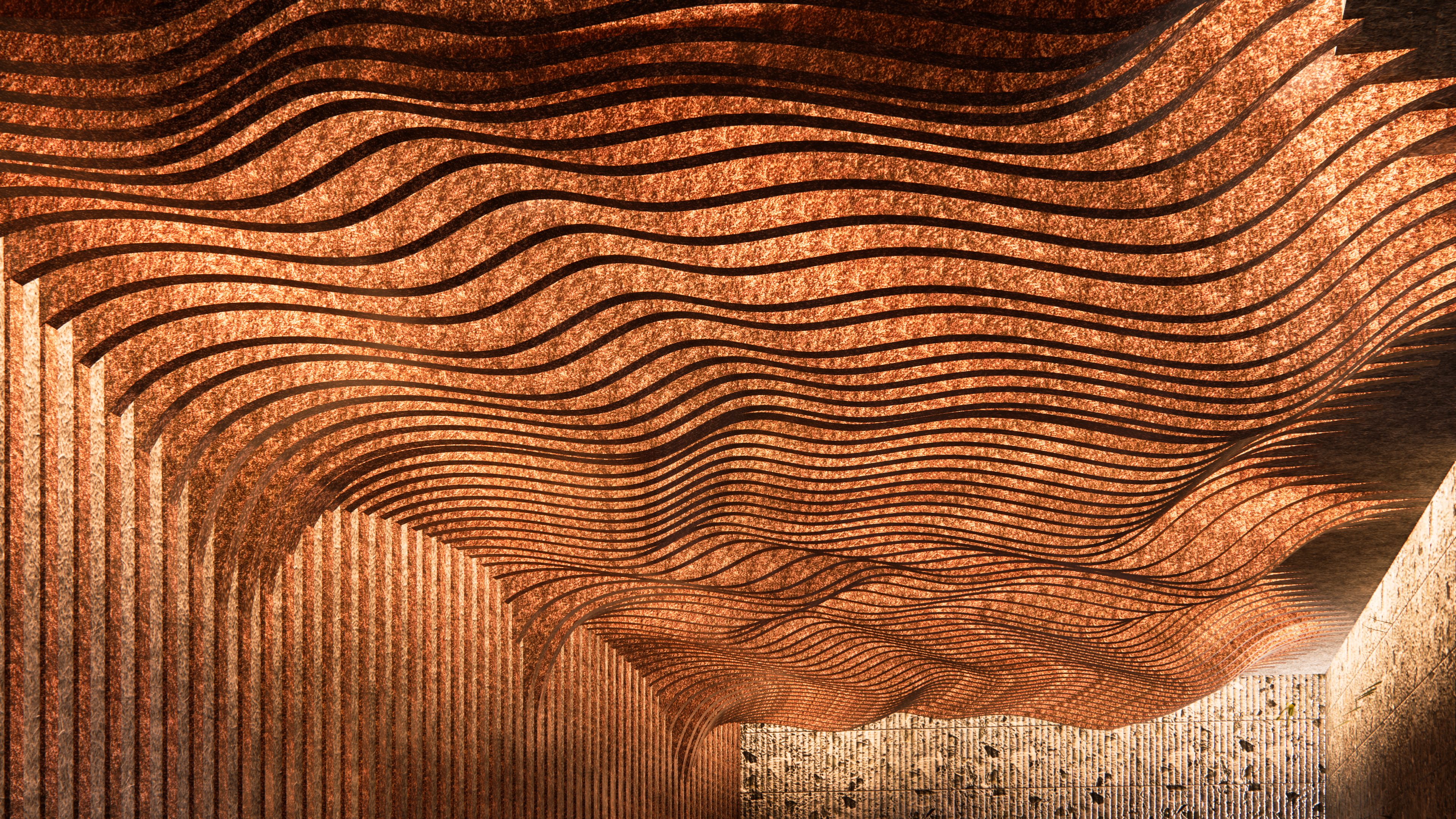
The Exit Experience
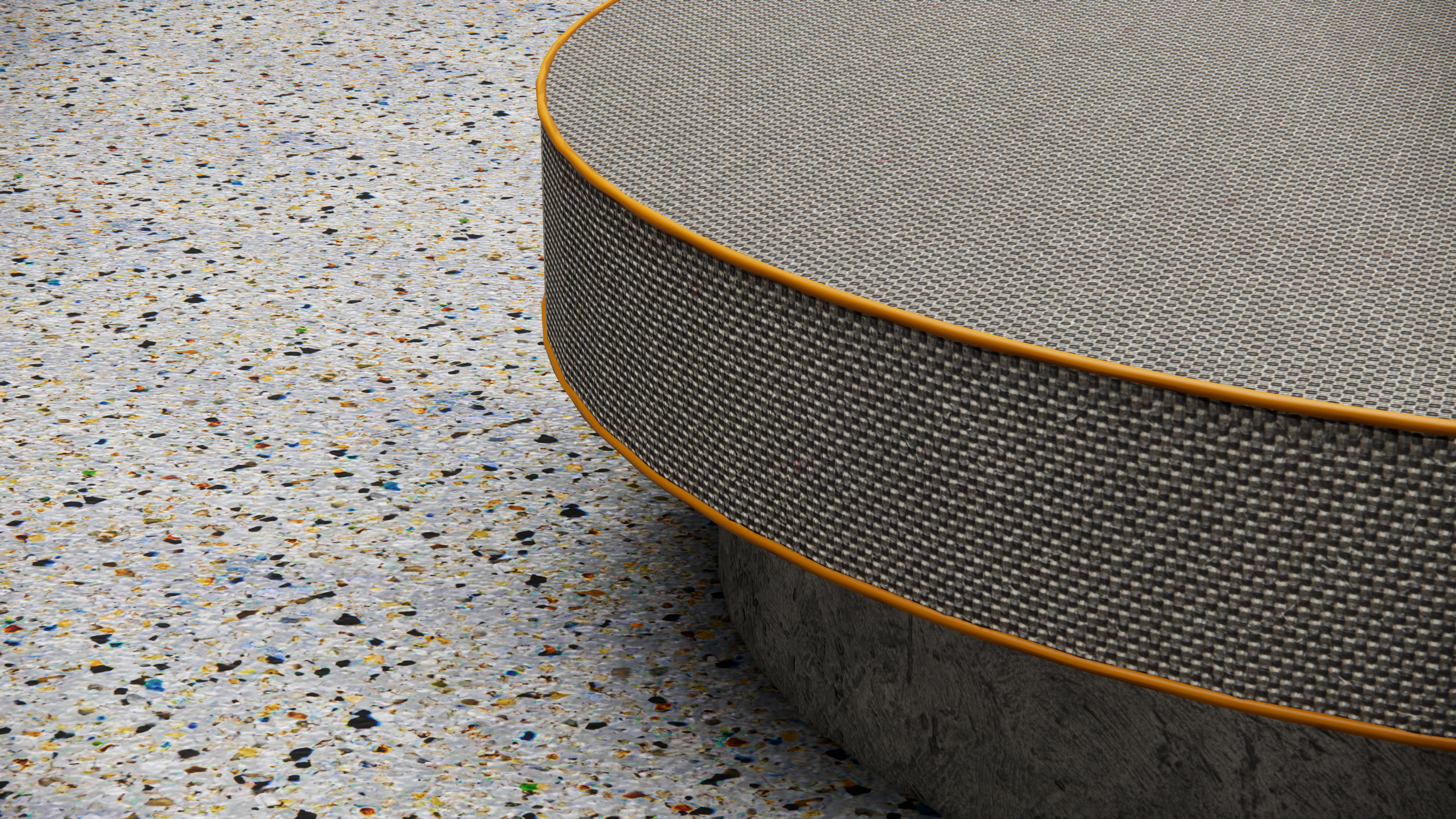
The Rain Exhibit
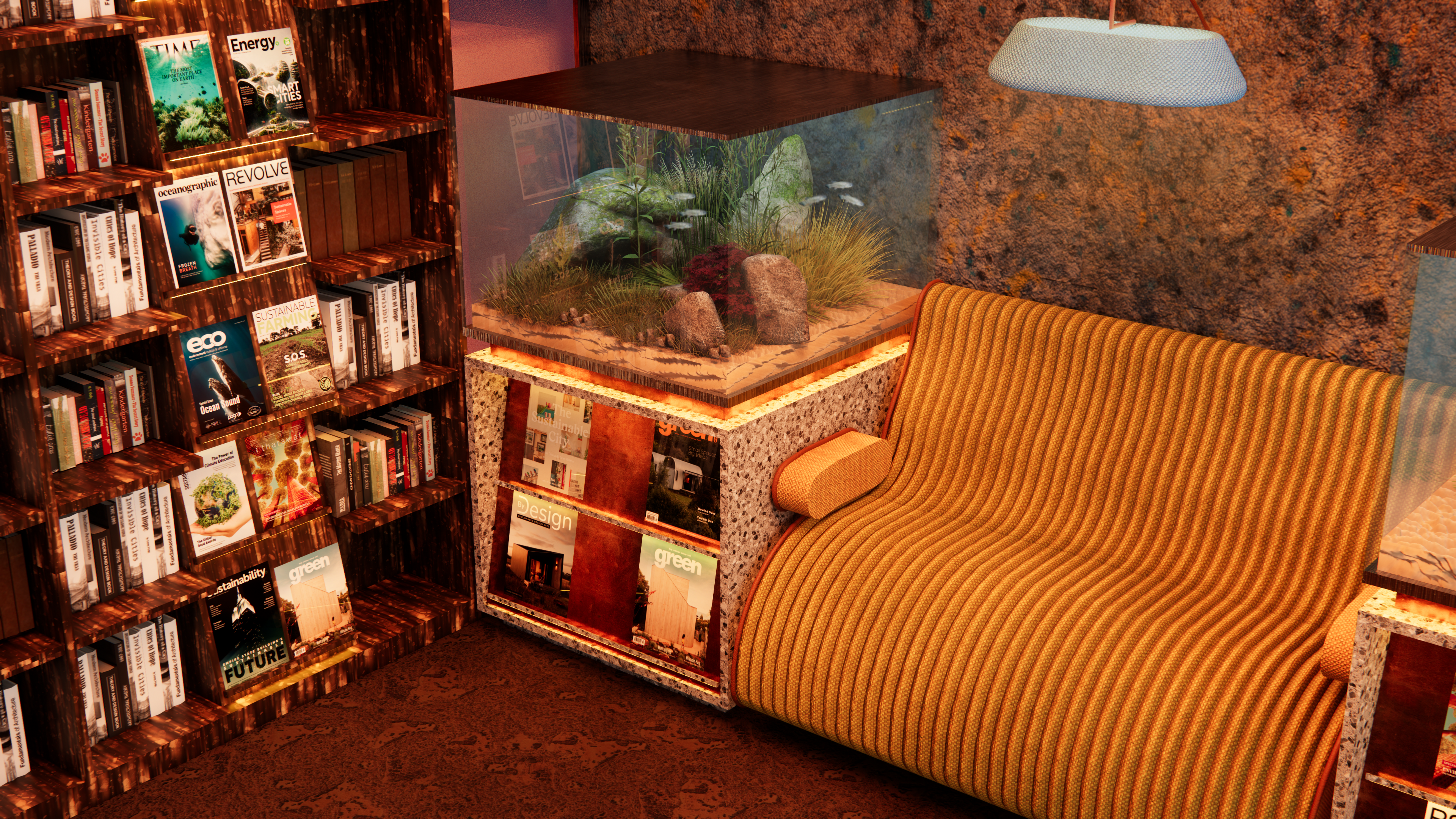
The Reading Room
Spatial Planning
